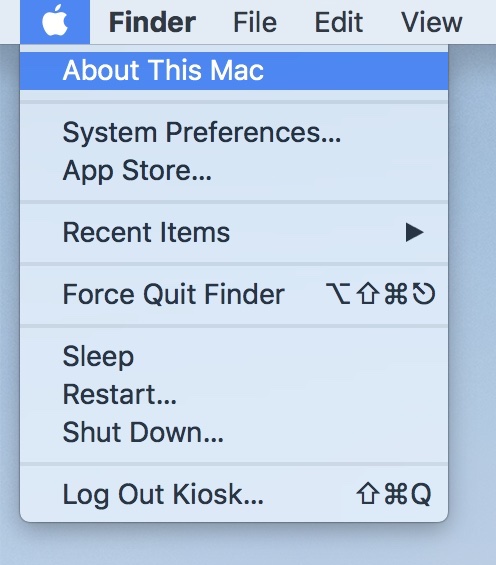
Apple periodically releases software updates that include updates to app functionality and security improvements.
You may receive a notification that updates are available for your Mac, you can choose when to install the update or to remind you the next day.
If you are frequently ignoring these messages then it is very possible that you will notice a decline in your computer’s performance. Staying on top of updates is crucial to maintaining the health of your MacBook.
If you are unsure on how to install updates or why you need to update your Mac - this blog post is for you!
Checking for Updates
To check for available updates on your Mac, first click on the Apple Menu in the upper left corner of your screen. Then click on About This Mac. Click on Software Updates to open the App Store.

Here you will be able to see available MacBook updates and App updates.
Setting up Automatic Updates
If you would like your Mac to update automatically, you can set this up easily!
Click on the Apple Menu in the upper left corner of your screen. Then click on System Preferences > App Store.
Here you can configure settings for updates. To have your Mac download updates without asking, select “Download new updates when available.”
To have your Mac install macOS updates automatically, select “Install macOS updates.”
What macOS version is installed?
To find out which operating system your Mac is running on, follow these steps.
From the Apple menu in the corner of your screen, click “About This Mac”
You will be able to view information about your Mac including the operating system.
Which MacOS version is the latest?
As of now, the latest MacBook update available is 12.0.1, macOS Monterey. To check for new MacBook updates, refer to Apple’s website here.
Published 10.29.21
How to update from an old version of MacOS | Outdated macOS and how to upgrade
If you are running macOS 10.11 or newer, you should be able to upgrade to at least macOS 10.15 Catalina. To see if your computer can run macOS 11 Big Sur - check Apple’s compatibility information and installation instructions. If your computer does not meet the minimum requirements for Catalina/Big Sur then try upgrading to macOS 10.14 Mojave instead.
If you are running an older OS, macOS 10.10 or lower, you will need to upgrade your computer to 10.11 El Capitan first, before using the steps above to upgrade to a supported version of macOS.
If you are wondering how to update your old MacBook Pro and are running into issues updating then you most likely need to update to 10.11 El Capitan first.
Instructions for how to update a MacBook Pro and how to update a MacBook air are exactly the same - regardless of which Mac you own - follow the instructions above for updates.
MacBook Update Stuck
Occasionally a MacBook update can appear “stuck”. As painful as it sounds, your update can take a few hours. Sometimes the update can be stuck, but not completely frozen. Some updates will take much longer than others - which can result in a seemingly stuck progress bar.
You can verify that the system is still updating by pressing Command + L to bring up the estimated install time. Some users have reported their update taking upwards of ten hours. It is best to run an update overnight or while you can let your Mac do its thing.
If you are positive that the install is frozen, then you will want to refresh your install. To do this, hold down your power button and wait 30 seconds. When the Mac is completely off, press and hold the power button again. The update should resume.
If you are still having difficulties updating, you can try resetting your NVRAM. To do this press and hold the power button on your Mac to completely shut it off and restart your Mac. Hard discs and fans need to stop running and the screen needs to be completely dark. Power on your Mac.
Once you hear the startup sounds, press and hold Command + Option + P + R
Keep holding them down until you hear the startup sound again.
Release the keys and the NVRAM will be reset and your update will resume.
If you are still having trouble updating your Mac, contact us at Digitiqe for assistance.
Why do I need to update my Mac?
Generally speaking it is best to keep your Mac running the latest software updates. This allows you to access the newest features and also means that your computer is protected against software bugs and security breaches.
If you’re dependent on certain software for your work you should ensure that your Mac will still be compatible with that software. After big macOS updates it often takes a few months for industry-standard software to work reliably on that update.
Mac Repairs and Update Assistance
If you are having trouble updating your Mac or need a repair on your Mac, contact us at Digitiqe. We now have locations in Denver, Fort Collins, Boulder and Breckenridge!
Need help with other issues?
Check out some of our other blogs -
-> How to Disable "Find My" on Your Apple Device
-> My iPhone is broken, should I repair it from a local shop?
-> How Do I Take Care of My iPhone?





